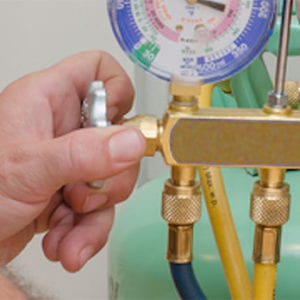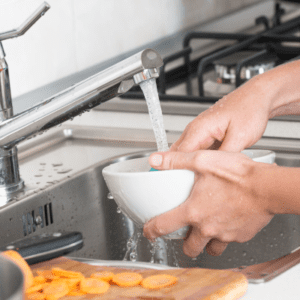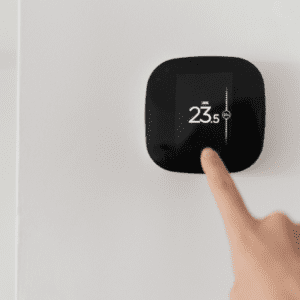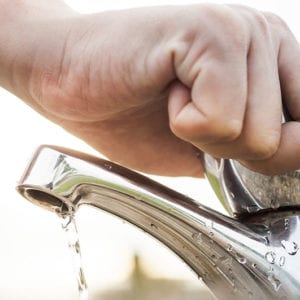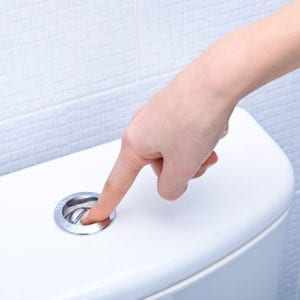Think of the last time you had a service technician in your home. Once they were finished working on your HVAC or plumbing system, the tech probably took some time to suggest a few ways you could prevent future problems. There’s also a good chance they asked if you were interested in a service or maintenance plan ‒ paying a fee in return for a discount on their services or other benefits.
You’re not wrong to view these agreements with some skepticism. Every year, the Ontario consumer services ministry receives a number of written complaints from homeowners about heating, cooling and plumbing maintenance packages.
The truth is, there are so many service companies offering so many different plans in Ontario that it’s practically impossible to generalize them. We’ve seen many service plans that provide a great deal of value…and others that aren’t worth the paper they’re printed on.
To help provide some clarity on this often-confusing issue, we’ve put together some important facts on maintenance and service plans for your home’s heating, cooling and plumbing systems.
- What is a service plan?
- What a service plan typically includes
- Situations where a service plan can save you money
- Questions to ask when you’re considering purchasing a service plan
- Other service plan tips
What is a Service Plan?
In simple terms, a home maintenance or service plan is an agreement between you and a service contractor.
You pay a recurring fee to the contractor in return for same-day emergency service or a discount on their services and/or other benefits such as priority service, discounts on repairs, parts and labour, or free annual safety and efficiency inspections.
There are many names for these agreements in Ontario, including service plans, protection plans and maintenance plans.
What’s Included in a Service Plan?
Each company with a service plan offers you something different. No two heating, cooling or plumbing contractors in the GTA have identical plans. This makes it difficult to lay out a concrete list of things that are included in a plumbing, air conditioning or furnace maintenance plan.
Below is a list of things that are typically included in many service plans, but keep in mind that no two plans are totally alike:
- Free annual check-up or inspection
Your annual furnace, air conditioning and plumbing inspection may be covered as part of the plan.
- Discount on repair or diagnostic services
Often a percentage off the total cost, not including the dispatch fee. May be limited to a certain number of repairs per year.
- Reduced dispatch fee or no dispatch fee
Many service companies charge a small dispatch fee on top of the cost of parts and labour. A service plan may lower or eliminate that fee for members.
- Discount or credit on parts and equipment
When it comes time to upgrade your equipment or repipe your plumbing, the plan may provide full or partial coverage of the cost of the equipment.
- Priority Service
You could be entitled to a reduced service window (such as a promise to arrive between 8AM and 11AM instead of 8AM and 4PM), first-in-line emergency service or priority service on the busiest days of the year.
7 Times a Service Plan Pays for Itself
Not all service plans are created equal. However, there are definitely times where the benefits of a comprehensive service plan far outweigh the membership cost. In these situations, the plan essentially pays for itself!
1. Fast, No-Hassle Service
Scheduling is often one of the biggest headaches of dealing with a service company. It’s bad enough to have to wait on hold and Press 1 just to talk to a real person, but many contractors will make you wait even longer on the day of the appointment.
If you’ve ever been told that a technician will arrive between 8AM and 4PM…you’ll know exactly what we’re talking about. Long service windows mean you have to take hours off work just to wait for the contractor, causing you to lose out on more money on top of the service fee.
Many service plans, including our Protection Plans at AtlasCare, solve that problem by giving you priority service and guaranteed shorter service windows. We offer same-day and next-day appointments to everyone, of course, but members come first.
2. Solutions for Outdated or Complex Systems
Say you bought a house with a temperamental mid-century plumbing system, or a century home with old, radiant heating. You might not be ready to replace them just yet, but unfortunately, these systems tend to require a lot of attention ‒ and the repair bills add up fast.
In this case, a plan that provides coverage for ongoing repairs could pay for itself in no time.
3. Premium Service at a Discount
Consider air duct cleaning, a service that can save you a considerable amount of time and money by helping your equipment operate more efficiently.
At full cost, many people will forego having their ducts cleaned as often as they should, but a plan that offers a discount off the bottom line makes this a far more viable option.
You always have choices when it comes to your heating, cooling and plumbing systems. For many people, a service plan gives you far more options to choose from!
4. Experience and Stability
There are so many benefits to having a go-to service company. A company that knows you, your home and your equipment can deliver far more personalized service. If a customer is pleased with a technician’s work, we always try to send that same technician on the customer’s future calls.
Having a service plan with a reputable, established company guarantees you’ll get personalized treatment. At AtlasCare, for instance, we allow our technicians to do the little things for members at no extra cost. This enhanced level of care saves you in many small ways that adds up over time.
5. No Hard Choices
Your HVAC and plumbing systems aren’t always top of mind. When there are multiple bills to pay and things to fix, things like leaky faucets and air conditioners tend to fall to the bottom of the list. Unfortunately, these kinds of problems tend to get worse (and more expensive to repair) over time.
With a plan that offers discounted or free service, your home’s most important systems won’t fall to the backburner. This can save you from having to bear significant future repair costs.
6. Dependable Emergency Service
One of the biggest advantages of being on a maintenance plan is knowing who you’ll call in a plumbing or HVAC emergency. An emergency situation could include:
When your home is hit with an emergency, you’re under a lot of pressure to find a solution fast. Far too many contractor horror stories begin with a desperate person calling the first company in the phone book or the first one that shows up on Google.
If it’s an emergency, AtlasCare is open 24/7, 365 days a year. Your safety is our highest priority.
7. Never Forget Annual Maintenance
Furnaces, air conditioners and any other piece of home comfort equipment is a major investment. A well-maintained unit should last you well over 10 years. It’s worthwhile to protect this investment by following the manufacturer’s instructions to perform annual maintenance.
Maintenance is important for your plumbing system, too, since it’s an opportunity to spot small problems that could turn ugly if they’re left unchecked.
Plans that offer free or discounted maintenance are a great way to keep up the minimum service requirement on your home’s essential systems.
What to Ask When Purchasing a Service Plan
Remember: not all service plans are worth the cost. It’s important to ask the right questions and shop around before choosing the right service plan for your family.
- Is the plan charged in weekly, monthly or annual fees? Are there administrative fees on top of the membership?
- Which parts of my home does the plan cover? Are there additional costs for additional coverage? (furnace, boiler, water heater, air conditioner, humidifier, pipes and plumbing fixtures, etc.)
- Does free or discounted service include the dispatch fee, parts, and/or labour?
- Do offers relating to service and repairs extend to emergency service, weekends or holidays?
- What does your company consider to be ‘emergency service’?
- Do you offer discounts on parts and equipment purchased and installed through your company?
- Will you send the same service technician to my home every time?
- Does the plan renew automatically?
- What are my options if I’m not happy with the plan?
- Do you guarantee your work?
Other Service Plan Tips
Purchasing an HVAC service plan is a financial decision, of course, but also an emotional one. It’s important that the plan gives you peace of mind.
That said, you should never feel pressured to start a service plan. It’s normal for service technicians to offer you a plan during your appointment, but a reputable company will never put you on the spot. You should always do your own research before you decide, especially if it’s your first time working with the company.
At AtlasCare, we offer two types of optional membership plans to suit different needs.
- Essential Plus Membership is a basic furnace or air conditioner maintenance plan available for as little as $6.95/month. Members receive one FREE emergency service diagnostic per year and a 15% discount on all repairs.
- Optimum Plus Membership includes everything in the Essential Plus plan, plus 100% repair coverage for a furnace or air conditioner, in addition to annual maintenance, for as little as $25.99/month.
We service every brand of home comfort equipment currently on the market including: Lennox, Carrier, Trane, KeepRite, York, Weil McLean, Ruud, Coleman and Bryant among others.
Call us at 647-952-2012 or contact us online to learn more about any AtlasCare or Bosco protection plan.

